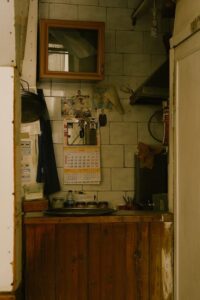How to Set Up a Family Command Center for Better Organization

If your household feels a bit chaotic at times, setting up a family command center can help bring order and clarity to everyone’s daily lives. This central spot in your home serves as a hub for schedules, reminders, important documents, and more. It keeps all family members informed and involved with plans, tasks, and events. In this post, we’ll guide you through the steps to create a family command center tailored to your household’s needs.
What Is a Family Command Center?
A family command center is an organized space in your home designed to keep important information visible and accessible. Think of it as a control panel where schedules, chore lists, meal plans, calendars, and messages come together. It can be a wall-mounted board, a section of a wall with hooks and shelves, or even a corner cabinet. The goal is to reduce clutter, reduce missed activities, and improve communication among family members.
Choosing the Location
Pick a High-Traffic Area
To be effective, place the command center where everyone regularly passes through. This might be:
– Near the kitchen or dining area
– By the main entrance or mudroom
– Close to the family’s homework or study space
Consider Visibility and Accessibility
Make sure the spot chosen is at a convenient height for all family members, including kids if they are old enough to participate in the organization.
Essential Components to Include
Every family’s needs differ, but here are some core items most command centers feature:
Calendar
A calendar is central to a command center. Use a large wall calendar, a whiteboard calendar, or a chalkboard to track appointments, activities, and deadlines.
Message Center
This can be a corkboard or magnetic board where you pin notes, reminders, invitations, or to-do lists.
Mail Organizer
Keep incoming and outgoing mail tidy with a simple wall-mounted organizer or basket.
Key Hooks
Assign hooks for keys, backpacks, or pet leashes to avoid scrambling—or losing—them when heading out.
Chore or Task Charts
Display chore assignments or daily responsibilities to encourage participation and accountability among family members.
Meal Planner
Zero in on your weekly meals with a dedicated space for meal planning. This helps with grocery lists and reduces last-minute cooking stress.
Supply Storage
Tray organizers, small bins, or shelves can hold pens, markers, scissors, tape, and other supplies needed for note-taking or quick fixes.
Gathering Materials and Supplies
Before setting up, gather materials suited for your space and style. Here are options to consider:
– Bulletin boards, whiteboards, and corkboards
– Magnetic strips or boards
– Baskets, bins, or wall-mounted mail holders
– Hooks and small shelves
– Labels and markers for easy identification
– Clipboards for placing papers
You can source many of these from office suppliers, craft stores, or online retailers.
Step-by-Step Setup Process
- **Clear and Prepare the Area**
Remove decorations or furniture from the designated wall or space. Clean and paint if necessary for a fresh background.
- **Arrange the Layout**
Plan your command center layout on paper before attaching items to the wall. Consider grouping similar functions together—calendars with planners, mail with keys, etc.
- **Mount or Install Components**
Start with bigger elements like calendars or boards. Use level tools to keep items straight and spaced evenly.
- **Add Hooks and Organizers**
Place hooks at accessible heights. Mount mail organizers nearby.
- **Label Sections Clearly**
Use labels to identify each section so everyone knows where to find and store items.
- **Stock Supplies**
Place pens, markers, sticky notes, and other supplies in their containers.
Tips for Maintaining Your Family Command Center
– Establish a Routine: Spend a few minutes each day reviewing and updating the command center with your family.
– Make it Interactive: Encourage kids to check their chores and keep track of their activities.
– Keep It Simple: Don’t overcrowd the space; remove outdated notes and documents regularly.
– Use Color Coding: Assign colors to family members or categories for faster recognition.
– Update Monthly: Refresh calendars or task lists at the start of each month.
Benefits of a Family Command Center
– Improved family communication
– Fewer missed appointments or deadlines
– Streamlined morning and evening routines
– Increased participation from every family member
– Decluttered common areas and visible organization
Final Thoughts
Building a family command center doesn’t have to be complicated or expensive. By customizing a space to your family’s daily needs, you create a centralized spot that keeps everyone informed and organized. Start small, adjust as needed, and enjoy the positive impact on your family’s day-to-day life.
With a little planning and creativity, your command center will become a crucial part of your home’s routine and help foster smoother operations for all. Happy organizing!




